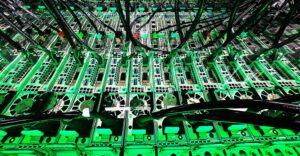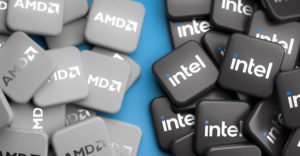
Computing heavyweight Hewlett-Packard is touting new blade server technology that it hopes will serve to ease management of more modular blades, which are also more energy-efficient and cooler thanks to new technology.
HP said the BladeSystem c-Class took three years to develop, and centers on the three key areas of virtualization, power and cooling, and system management to cut costs for both large enterprises with bigger deployments of the thin servers, and for smaller organizations, which can start smaller and scale up with HP ProLiant and Integrity servers, HP StorageWorks and other blade servers.
“By implementing a simple, out-of-the-box design, customers can dramatically reduce the biggest IT cost drivers and barriers to change in today’s racked, stacked and wired data centers,” said HP Executive Vice President of the Technology Solutions Group Ann Livermore.
Blade Benefits
Along with the cost savings of the thin blade server computers — which HP claims could reach as much as 46 percent in a typical 300-plus-server data center over three years — the stackable servers are also delivering management and flexibility for IT departments, Interarbor Solutions Principal Analyst Dana Gardner told TechNewsWorld.
“The management and virtualization benefits are huge because of the ability to more fully utilize resources, and at the same time maintain reliability by being able to swap out problem areas in units,” Gardner said. “If it has no impact on application performance, that fits the bill of what data center operators are looking for.”
Gardner said a blade hardware infrastructure also meets the needs of the increasingly used “software as a service” model, which requires a sound server management approach and ample scalability.
Virtual Cool Management
HP said its BladeSystem c-Class represents a “breakthrough” architecture refresh, with innovation centered on the virtualization, power and cooling, and management functionality.
The new BladeSystem enables users to “wire” computing resources once, change them on the fly, adjust power and cooling dynamically to cut energy consumption and cost, and increase productivity, according to HP.
The company echoed other chipmakers and server vendors in touting the energy efficiency of HP Thermal Logic and Active Cool Fan technologies, which serve to reduce cooling needs and power bills.
On a Roll
HP is making its blade upgrade as demand for the thin server technology and accompanying virtualization potential garner significant attention and demand from the market, three-quarters of which plan to deploy server virtualization technology, Yankee Group Senior Analyst Laura DiDio told TechNewsWorld.
The analyst praised HP’s blade server update as an improvement to an already good product, and indicated HP is wisely leveraging its technology on Linux, Unix and Windows platforms, as well as pricing its products aggressively.
“This is just further evidence of HP and how they’re really hitting on every cylinder,” DiDio said. “They’re making all the right moves to really satisfy their customer base.”
While she said HP could probably do a better job of marketing its server moves, the company is also providing a good, long-term solution for corporate computing customers that do not upgrade every other year, but extend their technology refreshes to four, five, or even six years.





















































